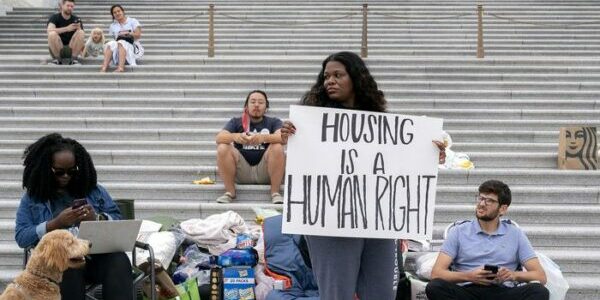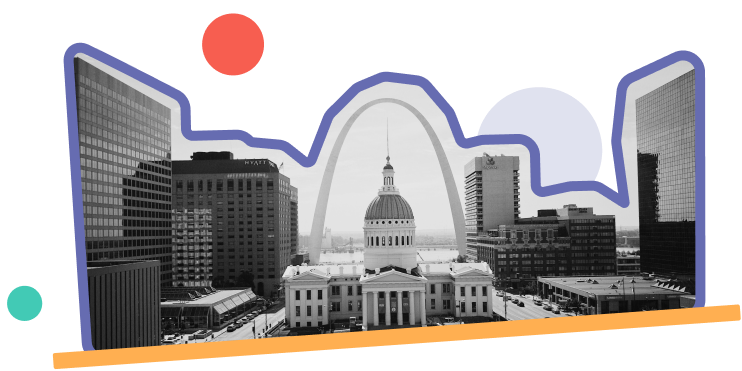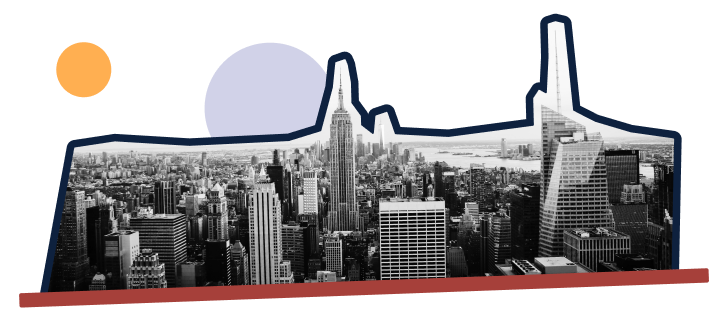Developing a New Vision
While corporate-dominated development strategies led by a handful of powerful elites may have defined the past in St. Louis, many young leaders are fighting to make sure they can set a community-led vision of development. More broadly, the region has a major lack of Community Development Corporations (CDCs), and a weak development financing infrastructure (CDFIs). But the solution, many we spoke to shared, is not simply to dump community financing or to erect undemocratic institutions. Several interviewees cited the dangers of bank actors moving alone in this context, such as Bank of America’s 100 million commitment to Black-led organizations that actually went to white-led groups speaking for the Black community and made little impact on longer-term development.
Key principles to a reparative, sustainable approach to the region are deep engagement, community voice, and long-term funding - one that puts ownership in the hands of the community. Such experiments are being developed in the Dutchtown area of South St. Louis, a part of the South city that has included a much larger Black population (i.e. post-Delmar Divide), and faced a crisis of viable housing stock. It’s also one of the most populous neighborhoods in the City. The Dutchtown South Community Corporation (DSCC) has taken an approach to housing and economic justice in the region, rooted in equity, collaboration, community ownership and transparency. Along with moving affordable housing, the CDC has also brought new pocket parks, art, storytelling, and community-building to the area. Importantly, DSCC has also joined Homes for All to include tenants rights organizing as part of its work, and made a concerted effort to bring Black and refugee leadership on both its staff and board.
The Dutchtown project is tied to a growing, larger network that has centered more Black voices in the investment and development process, Invest STL. Alongside Dutchtown, the collaborative also supports Cornerstone Corporations’ effort to bring new investment into the West End in ways that benefit existing residents and transform place for all. Invest STL came out of conversations and research that recognized the dearth of CDCs and CDFI’s in 2014 and 2015. Helping move finance capital out of banks’ hands while still mobilizing patient capital from actors like US Bancorp and JP Morgan Chase, Invest STL has also included providing participatory research action tools, investment networks, and more.
Beyond Housing has also recognized the challenge of bringing together the 24 municipalities that are part of the region under the 24:1 initiative, which has helped coordinate key services and deal with coordination issues. This approach has also included demonstrating how investment must include housing stock rehabilitation but also an ecosystem of education, housing, health, job training and access, economic development, and personal finance.
Perhaps most promising, rooted in Black-led movements, and responsive to the comprehensive disenfranchisement and disinvestment marking the region, is the People’s Plan St. Louis, an alignment plan anchored by Action St. Louis and ArchCity Defenders. The Plan, generated through deep collaboration with community, recognizes that there is not one lane by which community development is reimagined, and takes seriously the need for public financing via tax reform (and not just moving bank or foundation money in singular ways), universal housing, more inclusive voting rights, deep investment in green technologies, a rights-based approach to housing and more as part of a truly community-rooted and long-lasting shift. DSCC is one of many members of this powerful coalition, and the Plan is further detailed in the Movement Infrastructure segment of this report.
Centering Environmental Justice to Re-Envision the City
he People’s Plan St. Louis draws to the center the ways the long intergenerational effects of racialized inequality can also be seen in the ways that communities are exposed to both environmental hazards like air pollution and in homes but also deprived of access to clean water, green space, fresh foods, and other resources vital to healthy, full lives. Key issues also include the lack of green space and trees, which generates heat islands deeply exacerbated by climate change. Trash dumping by industrial polluters, businesses, and slumlords has also marred community life. Aged infrastructure leaves schools with lead-ridden water, and houses with mold, a lack of weatherization, and more. These realities hit Black communities hardest, as well as shape the lives of migrant Latinx and Asian Pacific Islander communities.
The People’s Plan and its grassroots participants bring environmental justice concerns into the conversation, as they relate to housing, land use and health, and center Black voices in a future-forward agenda. Solutions to food access such as urban farming are entering community development strategies, but as one organizer made clear, “actually effecting change in these environmental issues requires building power.” The People’s Plan is a key anchor to such strategies, and promises to redefine the ways a green vision of the city must also be one rooted in racial, gender and economic justice.


